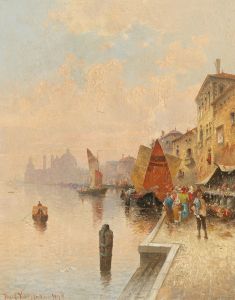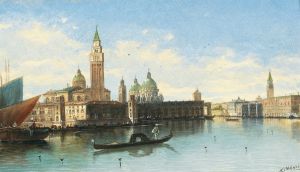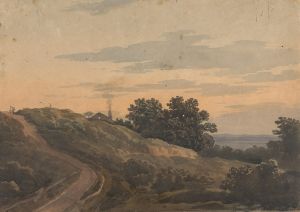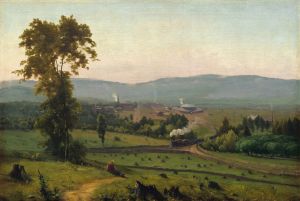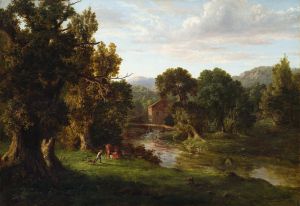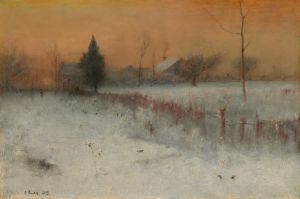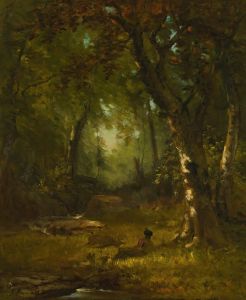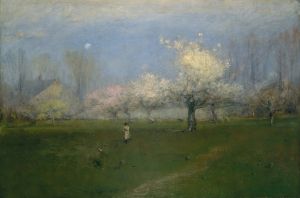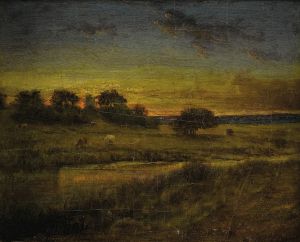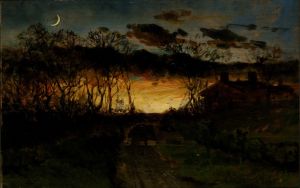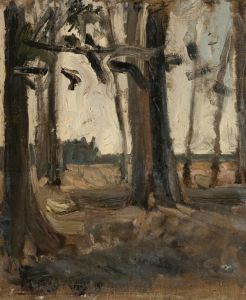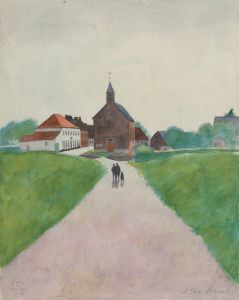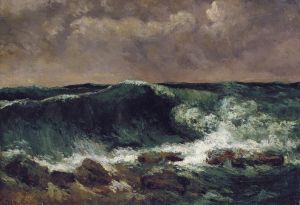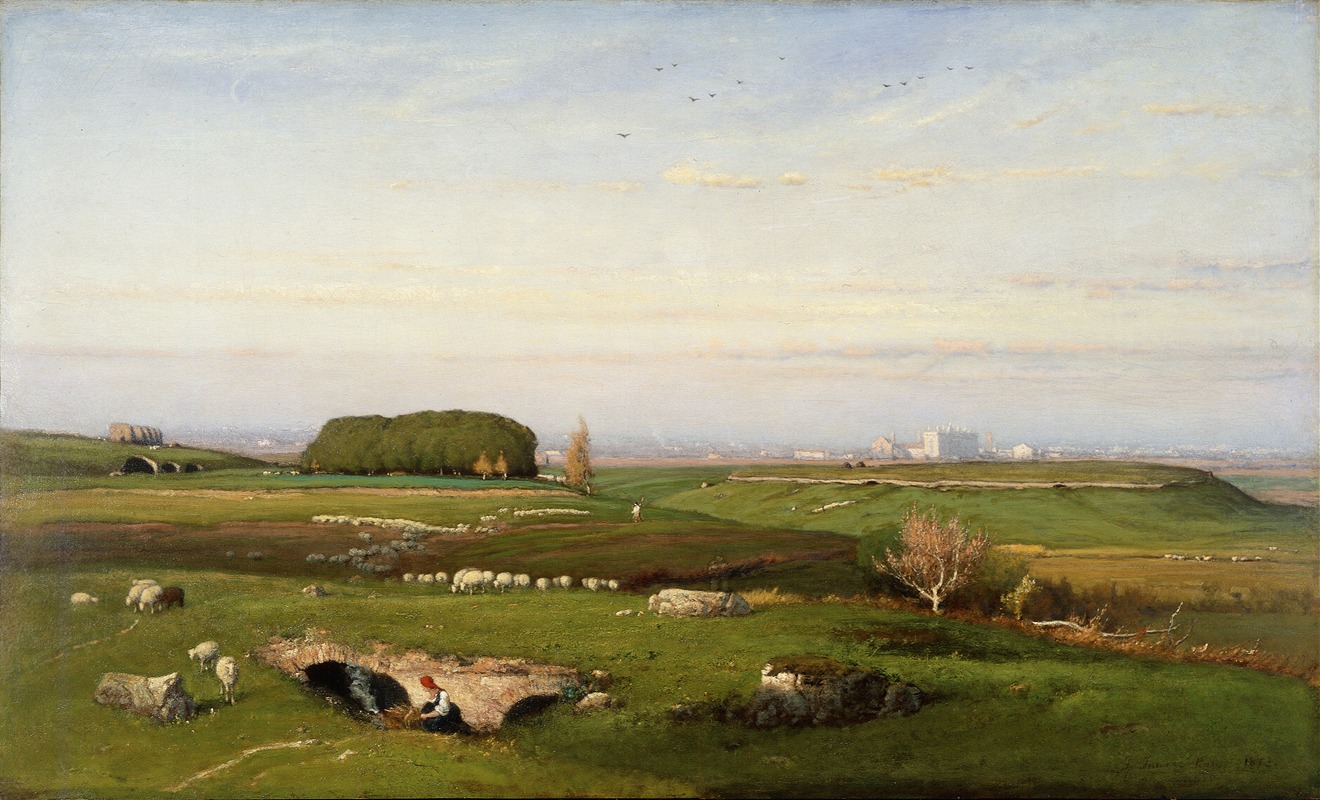
In the Roman Campagna
A hand-painted replica of George Inness’s masterpiece In the Roman Campagna, meticulously crafted by professional artists to capture the true essence of the original. Each piece is created with museum-quality canvas and rare mineral pigments, carefully painted by experienced artists with delicate brushstrokes and rich, layered colors to perfectly recreate the texture of the original artwork. Unlike machine-printed reproductions, this hand-painted version brings the painting to life, infused with the artist’s emotions and skill in every stroke. Whether for personal collection or home decoration, it instantly elevates the artistic atmosphere of any space.
"In the Roman Campagna" is a notable painting by the American landscape artist George Inness, created in 1876. Inness is recognized as one of the most influential American artists of the 19th century, and he played a significant role in the development of landscape painting in the United States. His work is often associated with the Hudson River School, although he later developed a more individual style that incorporated elements of the Barbizon School and tonalism.
The painting "In the Roman Campagna" reflects Inness's mature style, characterized by a focus on mood and atmosphere rather than detailed representation. The Roman Campagna, a rural area surrounding Rome, Italy, was a popular subject for artists in the 19th century due to its historical significance and picturesque scenery. Inness visited Italy several times, and his experiences there deeply influenced his work. The Campagna's vast, open landscapes and the interplay of light and shadow provided rich material for his exploration of the spiritual and emotional aspects of nature.
Inness's approach to landscape painting was deeply influenced by his philosophical and spiritual beliefs. He was a follower of the Swedish scientist and philosopher Emanuel Swedenborg, whose ideas about the connection between the natural and spiritual worlds resonated with Inness. This influence is evident in "In the Roman Campagna," where the landscape is imbued with a sense of tranquility and harmony, inviting viewers to contemplate the deeper meanings behind the natural world.
The painting features a serene depiction of the Campagna, with rolling hills and a soft, diffused light that creates a peaceful and contemplative atmosphere. Inness's use of color and light is subtle and nuanced, with a palette dominated by earthy tones and gentle contrasts. This approach reflects his belief in the power of art to evoke emotion and convey a sense of the divine presence in nature.
"In the Roman Campagna" is also notable for its compositional balance and the way Inness guides the viewer's eye through the landscape. The arrangement of elements within the painting creates a sense of depth and movement, drawing the viewer into the scene and encouraging a meditative engagement with the work. Inness's brushwork is loose and expressive, contributing to the overall impressionistic quality of the painting.
Throughout his career, George Inness sought to move beyond the literal representation of landscapes, aiming instead to capture their spiritual essence. "In the Roman Campagna" exemplifies this approach, showcasing his ability to convey the emotional and transcendent qualities of the natural world. The painting remains an important example of Inness's contribution to American art and his influence on subsequent generations of landscape painters.
Today, "In the Roman Campagna" is held in high regard and is part of several public and private collections. It continues to be studied and appreciated for its artistic and historical significance, as well as its embodiment of Inness's unique vision and philosophical outlook.





